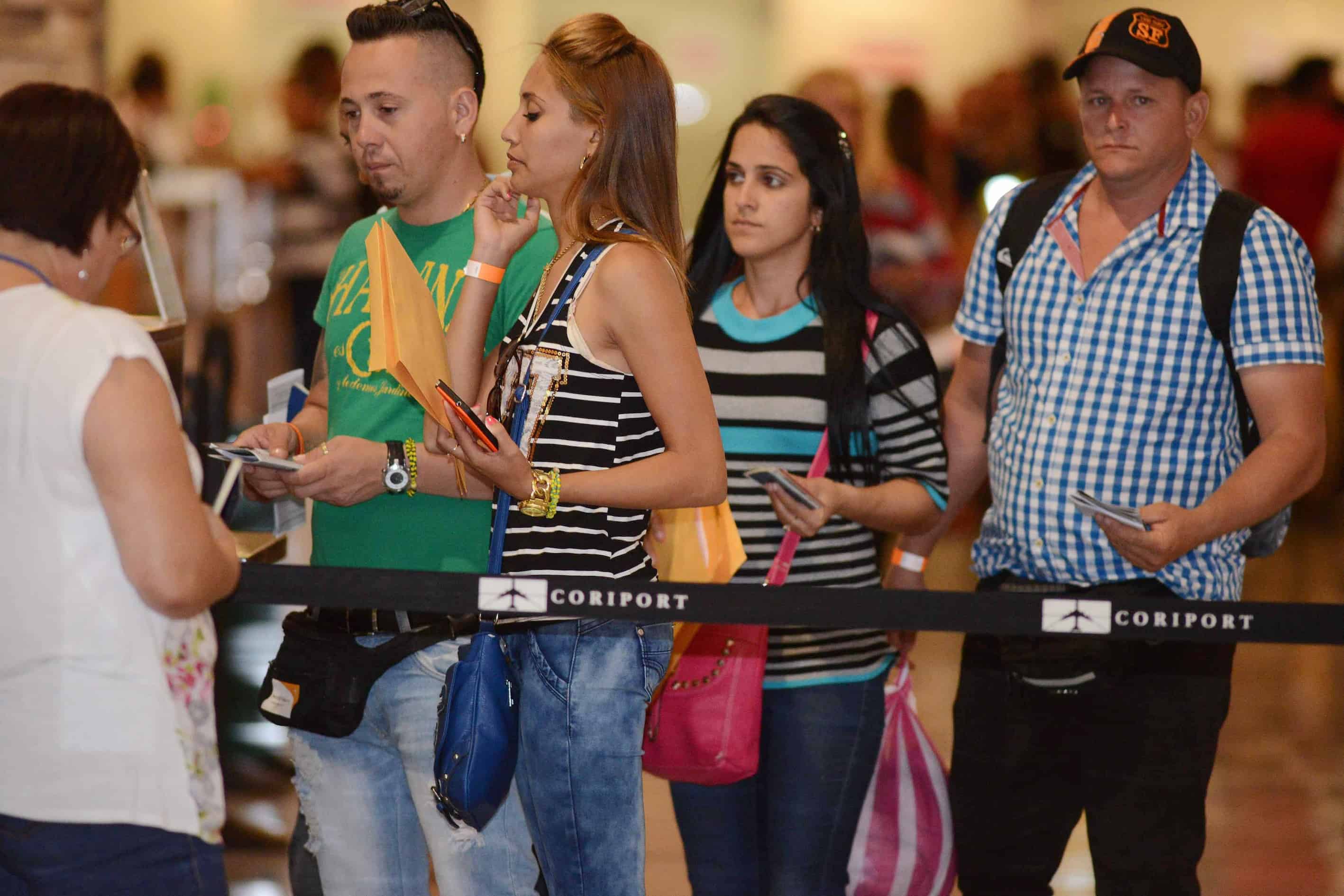GUATEMALA CITY — A group of 180 Cuban migrants took a step closer to their dream of a new life in the United States Wednesday after flying out of Costa Rica in a trial run designed to blaze a path for thousands of stranded compatriots to follow.
The 109 men and 71 women are ultimately bound for the United States, which has a longstanding policy of accepting Cuban migrants.
If their arduous plane-and-bus trip is successful, other flights will follow as early as next week, transporting more of the 7,600 other Cubans stranded in Costa Rica.
The air bridge, organized by Latin American governments and the International Organization for Migration, became necessary when Costa Rica’s northern neighbor Nicaragua — a Cuban ally — closed its border to Cuban migrants in mid-November.
The 180-strong group boarded a chartered aircraft in Liberia in northern Costa Rica, near Nicaragua’s border.
They arrived just over an hour later at El Salvador’s international airport southeast of the capital San Salvador, disembarking with smiles and small bags.
Accompanied by a police escort, they arrived in Guatemala later aboard four buses before dawn and kept going toward Mexico.
After crossing Guatemala, the Cubans are to be dropped off at the border with Mexico with 20-day visas to make their own way to the U.S. border and to what they hope will be new lives in America.
Joy and fear
Elation and trepidation gripped the Cubans ahead of their flight out of Costa Rica, where many have languished for weeks or even months.
“I still can’t believe it. We could be arriving and I still won’t believe it,” said Liana Cabezas González, a 28-year-old interpreter who left Havana seven months ago, aiming to join her parents already in Miami.
She and the others paid $555 for the trip from Costa Rica to Mexico’s border. The governments involved insisted the migrants bear the entire cost of their trip.
But their joy was tempered by fears about running the gauntlet of Mexico’s fearsome narco-gangs.
“We’ve heard a lot that in Mexico there are gangs like the Zetas that make attacks on roads and that there are dangerous zones,” said Yordani Casanova, a 33-year-old who left his herbal drinks business in Cuba to make the journey to the United States with his wife.
Cabezas said she planned to minimize that risk by taking a domestic flight inside Mexico to a town close to the U.S. border.
U.S. welcome
At American border posts the Cubans can expect a relatively easy entry, despite not having American visas.
Under a Cold War-era law, America welcomes Cubans under a scheme that gives fast-track access to permanent residency.
Costa Rican officials were visibly relieved that there is finally movement to clear out some of the thousands of Cubans who have been piling up in shelters on its territory.
Foreign Minister Manuel González said after the plane’s departure that the trip was organized for “humanitarian” reasons and he was confident of its success.
But the chief of its migration service, Katia Rodríguez, told some of the migrants that those left behind and unable to pay for flights would have to wait for a solution.
On Dec. 19 Costa Rica stopped giving visas to any more arriving Cubans and threatened deportation for any found entering clandestinely.
As a result, some 2,000 other Cubans are now stranded farther south, in Panama. They have no access to the air bridge being organized and their fate has not been resolved.
In shelters set up in churches and school grounds in northern Costa Rican towns, other migrants waiting for their own exit played with balls or washed clothes or relaxed on mattresses on the floor — activities that have marked their long weeks in limbo.
Read more about the Cuban migrant crisis in Costa Rica here.






